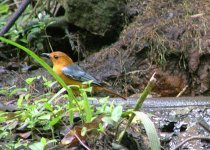hollis_f
Well-known member
Indeed, it seems to be deliberately designed to make it unusable. I was planning on buying this to install on my Netbook (very small, lightweight, laptop with no internal CD drive) to use on my upcoming trip to Botswana. Then I found out that I can't just install everything to the Netbook's hard drive, but that the CD needs to be inserted whenever the program is used - just for copy protection. That means I'd have to carry an external CD drive with me, which adds enough bulk to make it unfeasible.I had the CD-Rom years ago and it was good fun, but won't be of much use in the field I would imagine.
Looks like I'll have to stick with the reliable old Sasol paper guide.




